“I lay the foundation stone for the youngest district in our city of Munich. May it be a real home for its future residents and become the focus of a fulfilled life and a place of peace.”
– Lord Mayor of Munich, Hans-Jochen Vogel, 25 May 1960
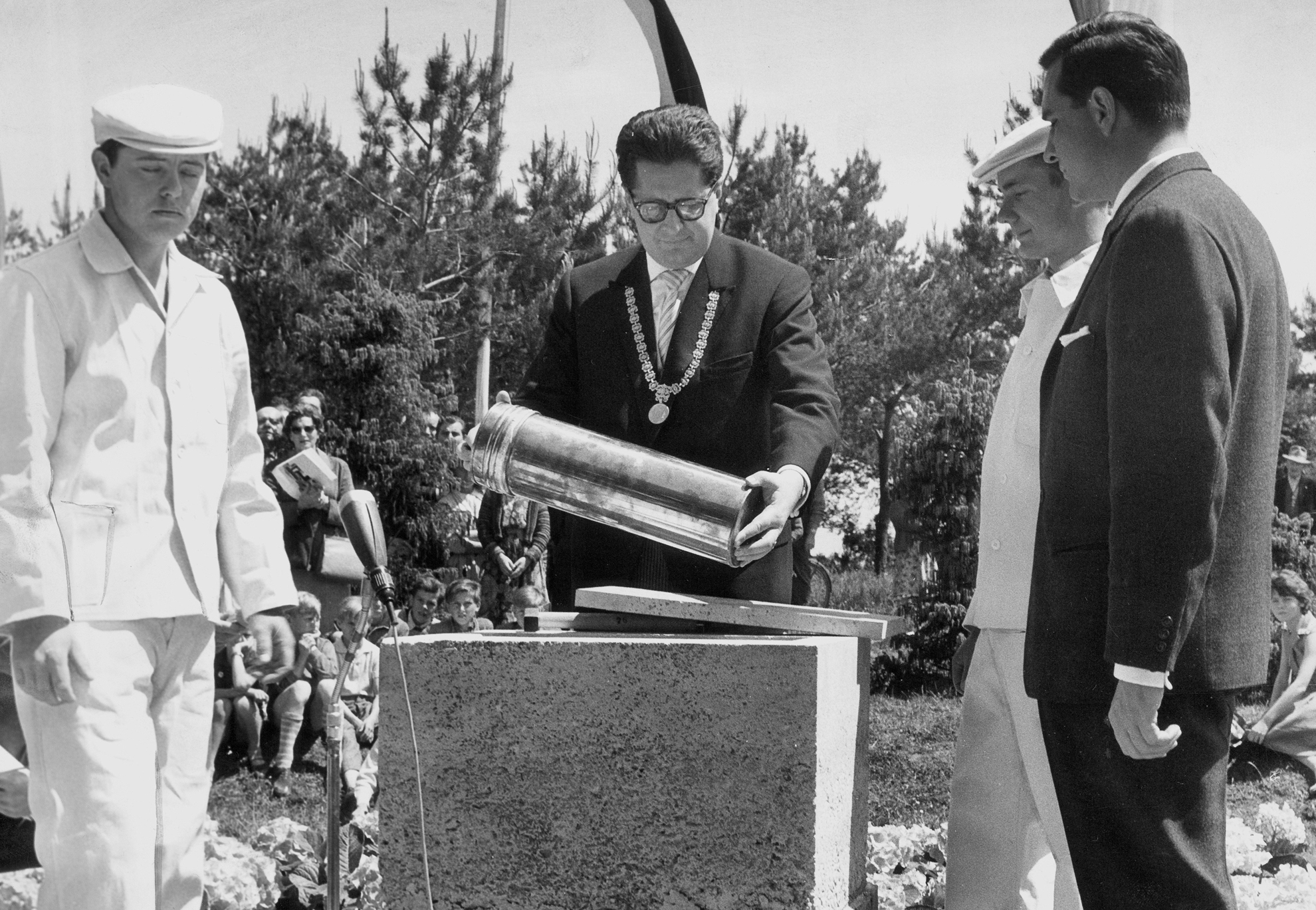
|
“I lay the foundation stone for the youngest district in our city of Munich. May it be a real home for its future residents and become the focus of a fulfilled life and a place of peace.”
– Lord Mayor of Munich, Hans-Jochen Vogel, 25 May 1960

On 25 May 1960, the Lord Mayor of Munich, Hans-Jochen Vogel, gives a speech at the ceremony to mark the laying of the foundation stone for the Hasenbergl. He emphasises the exemplary character of the housing estate and, with the blessings of the canon Monsignor Anton Maier, he places a time capsule containing contemporary testimonies in the hollow foundation stone. With the shell constructions in part already finished, time is of the essence, and for this reason the first stone is not placed in the foundations of one of the buildings, as is usually the case, but is placed within a plinth atop of which, soon after, there stands a horse sculpture by the artist Alexander Fischer. Fifty years later, after the post office has been torn down and the horse sculpture relocated to the square in front of the new cultural centre, on October 17 2012, the keynote speaker, the Lord Mayor of Munich, Christian Ude, makes a reference to the housing estate’s foundation stone in his speech. But where is it? The horse sculpture now stands on a new plinth, the old one with the first stone and time capsule was disposed of. And so the Hasenbergl has lost its time capsule and all it contained.
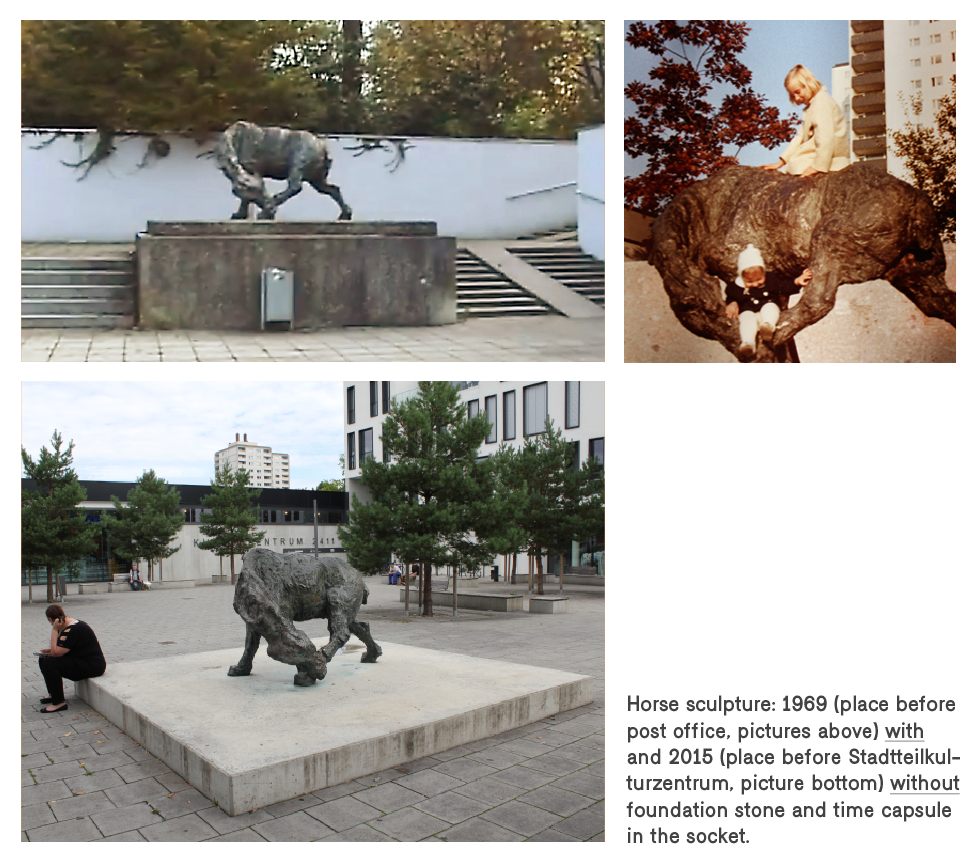
This “absence” is to be seized as an opportunity. The visions of the future put forward at the time of the estate’s founding have failed to materialise. Above all the ‘image’ of the Hasenbergl has taken an unforeseen course, which now however can be corrected by repeating the laying of the foundation stone. For this undertaking, Hasenbergl residents are to fill a new time capsule with new material. This material will also be shared with and presented to the broader public. In this way, the residents can place their self-understanding on a sounder basis.
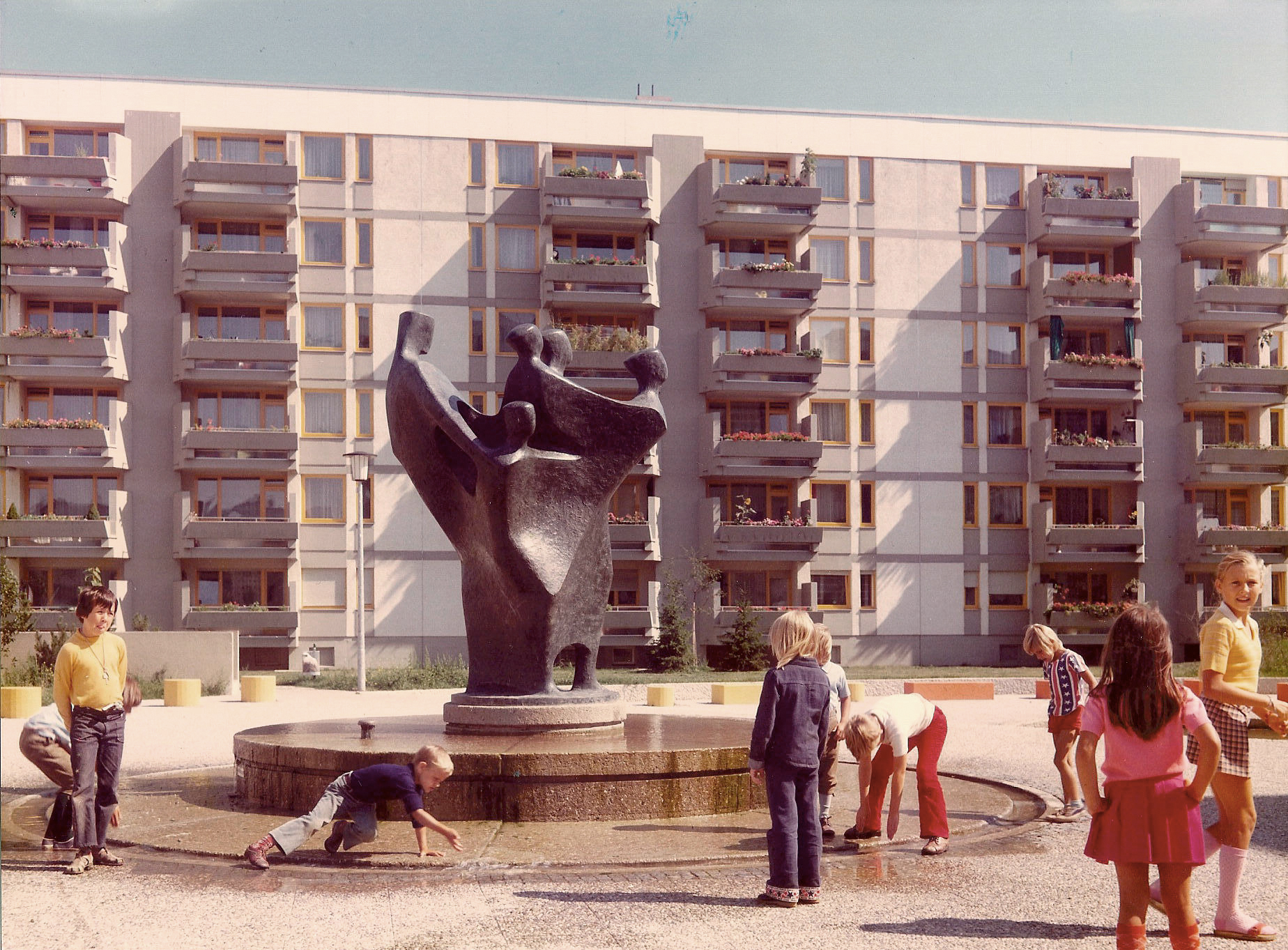
Built on the outskirts of Munich, the Hasenbergl was the city’s first large housing estate of post-war modernist architecture, implementing a host of ambitious urban planning ideas: a model town with lots of green spaces, well-appointed flats and diverse, smaller shopping centres. A ‘dormitory town’ was founded, catering to the classic role models. The area had already fallen into disrepute before construction work had begun due to the Frauenholz camp for the homeless. Thus, the stigmatisation did not first begin a few years later, as is often claimed. As the decades passed, Hasenbergl’s population got older, younger people mostly moving away. Moreover, the proportion of migrants rose continually, a trend that eventually triggered a clear shift to the right in the traditionally red working-class neighbourhood, earning it the reputation of being a “bastion” of the national-conservative ‘Republikaner’. It was even claimed that a ghetto was forming. In contrast to this image, the situation today, characterised by imaginative forms of cultural and social engagement, shows a very different face. And it is not least the merits of the neighbourhood’s urban planning that has contributed to this development.
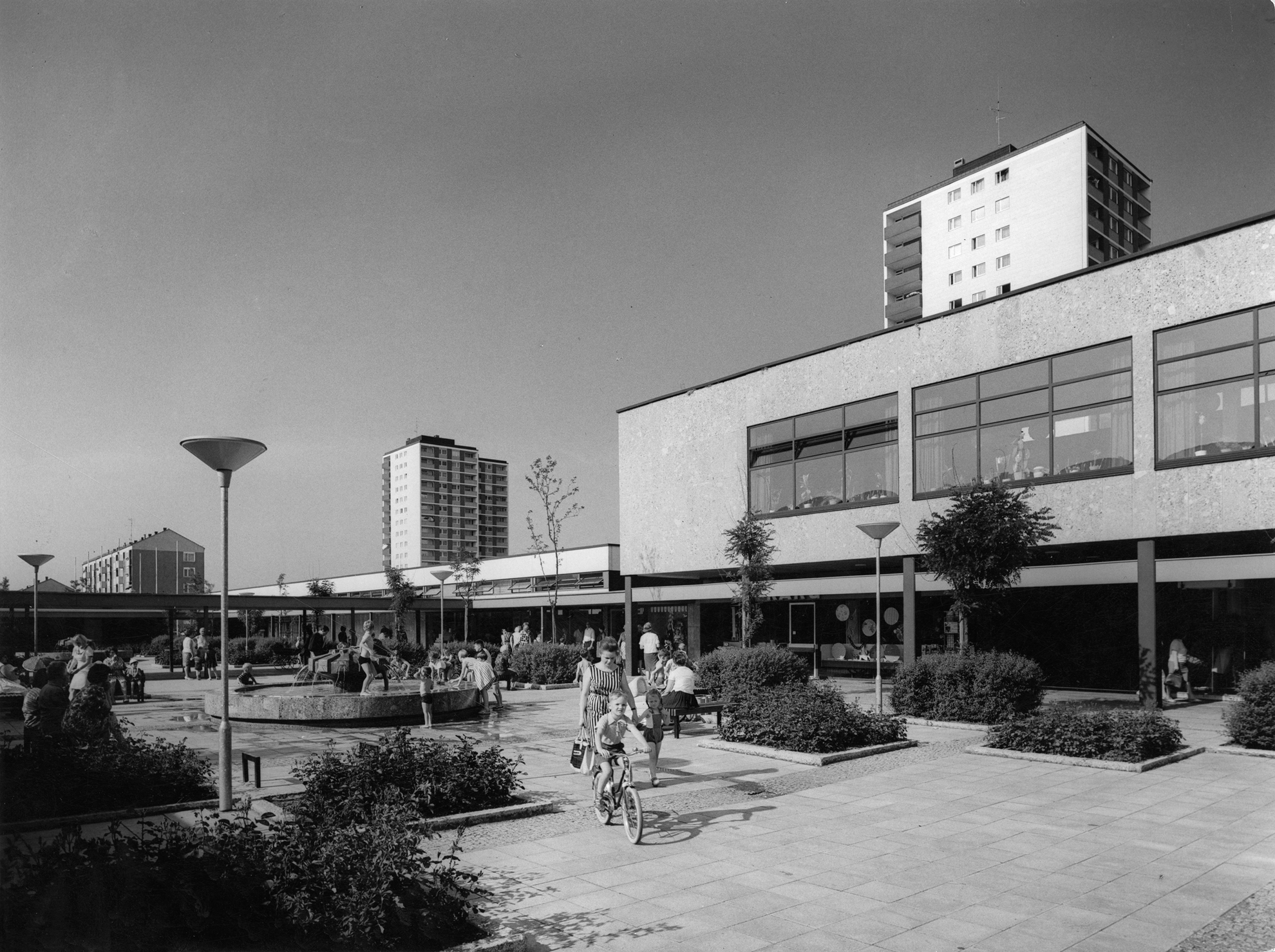

The project “Hasenbergl Time Capsule” would like you to become a time messenger and tell about a specific event in the history of Hasenbergl. Whether you once lived there, live or work there today, or have a connection to Hasenbergl in some way – join the project and become a time messenger! Join in with all those who remember an event (more or less public) from their time in Hasenbergl, an event that was moving or left behind a strong impression.
Events and stories that tend to be passed over in official accounts are to be swapped and presented publicly, enabling a new perspective on the Hasenbergl as a neighbourhood. This in turn forms the basis for creating – with your participation – an alternative account of life in this large housing estate on the outskirts of Munich, which has gone through an eventful and colourful history in its 56 years.
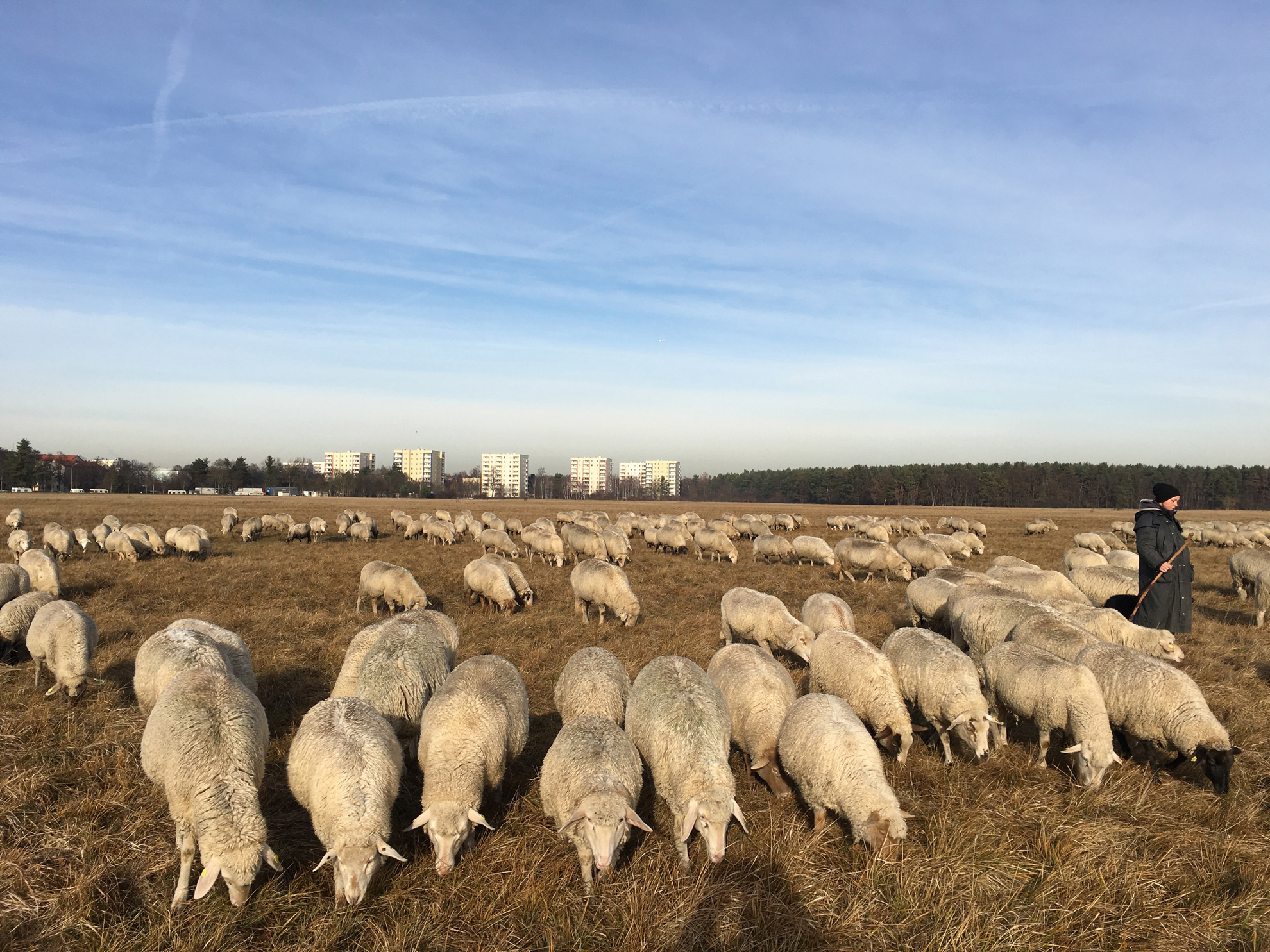
If you’d like to become a time messenger, choose a specific event or incident from your personal Hasenbergl history you would like to share and pass on. It doesn’t matter if it was long ago or happened only recently. Attend one of the events being held at various venues in Hasenbergl or contact Pia Lanzinger directly (see KONTAKT or NEWS). Every time messenger receives an individual t-shirt. Printed on the front in silver is the date the event or incident took place (there are three versions to choose from: the specific day “25.05.1960”, the month and year “Jan. 1970” and a time period “1988-2013”). Dates like these printed on a t-shirt are unusual and arouse curiosity while creating a visible connection between the time messengers. Participants can pick up their personal t-shirt at an arranged time and tell their story in front of a camera. The clips will then be presented later on the website.
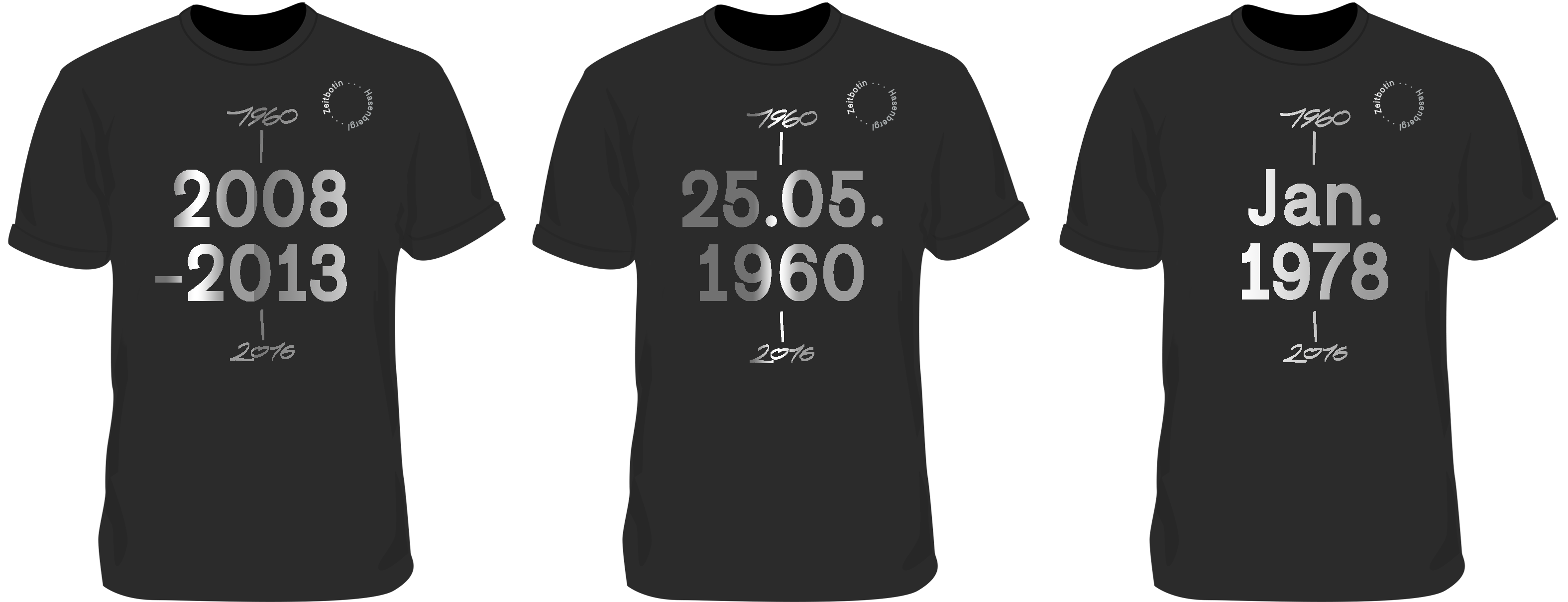
The more often you wear your t-shirt, the better. And whenever someone asks you about it, you can play the role of the time messenger and tell the story. In this way you and all the other time messengers are smuggling a new bit of Hasenbergl history into the public space of your district. You are attracting attention and strengthening the collective self-confidence of the place where you live or work and with which you connect something very specific. And you are also bringing the collective memory of this suburban estate to other parts of Munich. Residents from across Munich – thanks also to the media coverage – will begin to notice the proud wearers of the district’s history. And in the end, a very different history of Hasenbergl than the usual clichés will find a place in the minds of Munich’s inhabitants.

Events are to be held where a group of interested time messengers will be invited to publicly present their specific events and incidents. These will be held at different venues to reach out gradually to other Hasenbergl residents and get them on board.
Following these appearances by the time messengers, a new time capsule for Hasenbergl will be designed and created during a well-publicized campaign. The alternative stories will all be placed in the capsule. And at a ceremony, the new time capsule will then be permanently installed at a selected location.
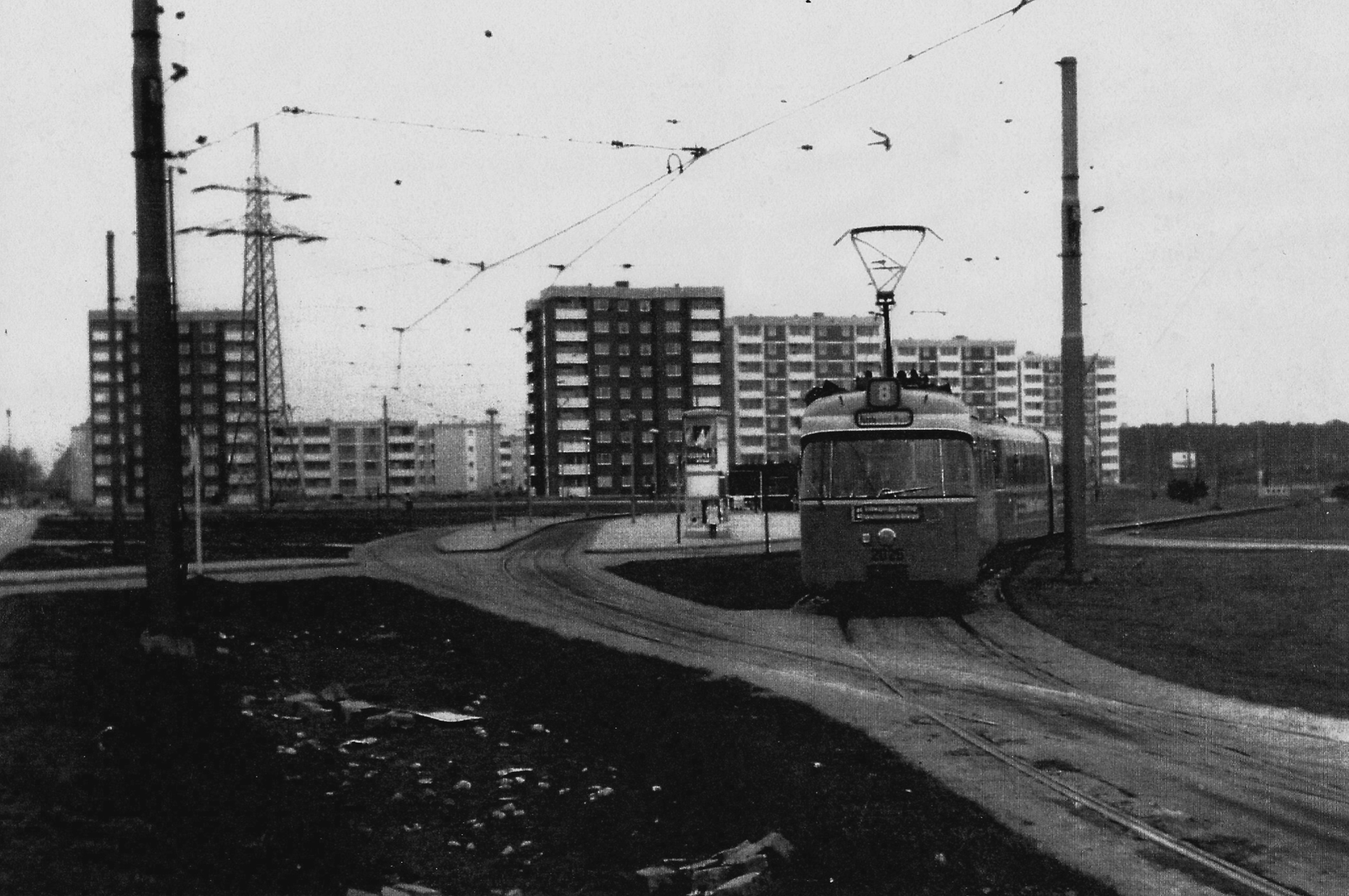
For the last 20 years the Berlin-based artist has realized projects at a variety of locations. She has regularly focused on unique urban spaces and residential architectures. One decisive factor in almost all of her work is the connection she forges between her research and on-site collaborations with local actors. In Messestadt Riem Pia Lanziger realized the project “That’s how we live” in 2001. With a special living magazine and “walking tours” of flats, the project not only traced and publicly documented the pioneering spirit and open exchange between the first residents but also supported the process. In Mexico City she brought a group of barrenderos (street cleaners) to the stage. Over a number of performances they presented themselves to the public at various venues in the city, acting out pieces that addressed the city’s rubbish problem and their own living and working conditions. In the summer of 2014 she realized the project “Roll the dice – the gentrification game”, a monumental board game played with passers-by in different Berlin neighbourhoods. In the harbour city of Geraldton in Western Australia, Pia Lanzinger created a forum for the local Aboriginal language threatened by extinction with the project “Geraldton goes Wajarri” (2014/15).
www.pialanzinger.de www.geraldton-goes-wajarri.org www.lesestoff-barfussbereich.de
The artist during her childhood in Hasenbergl
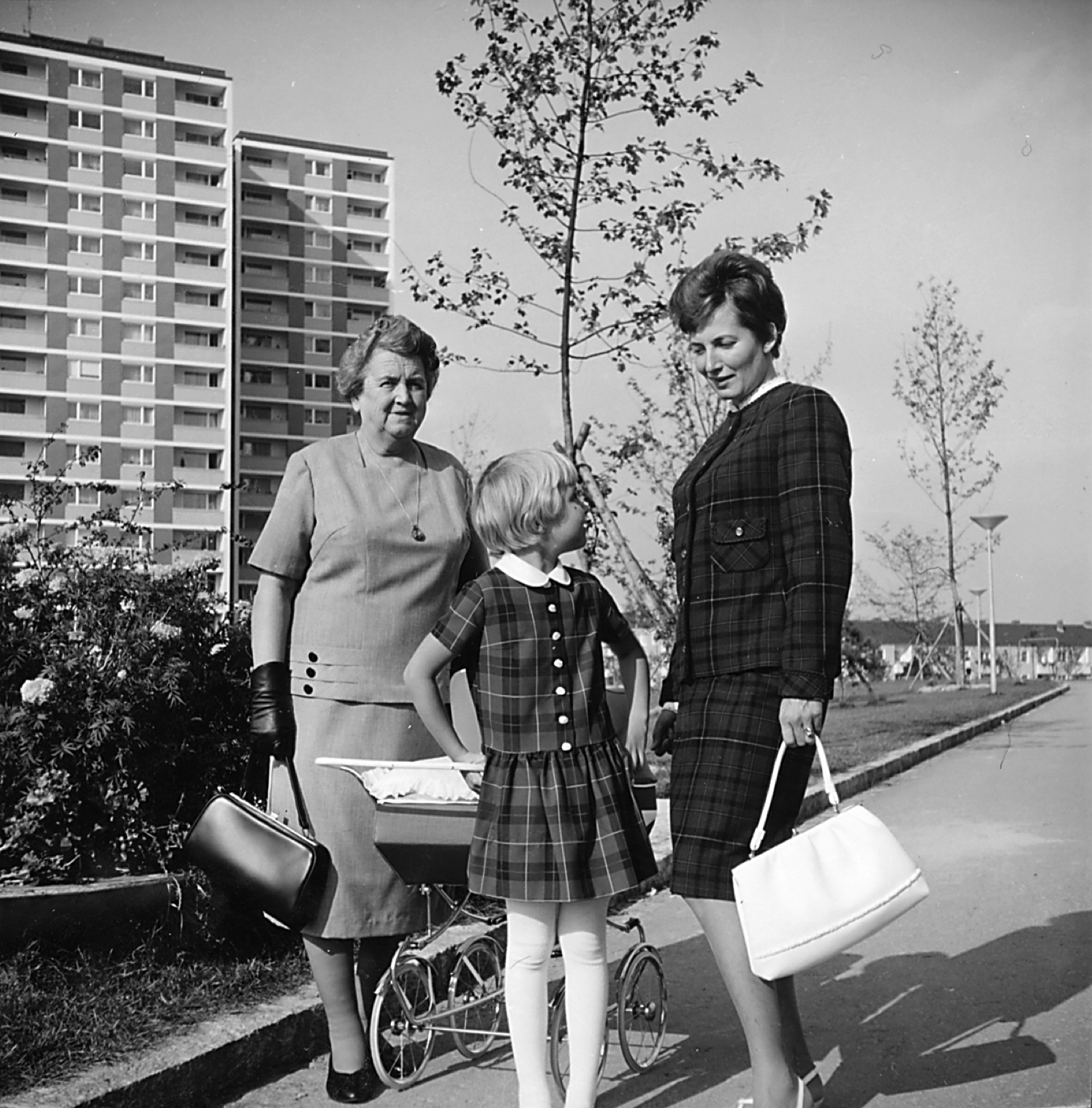
In cooperation with: Stadtteilkultur 2411 Münchner Volkshochschule Stadtbereich Nord
Special Thanks to: Stefan Baier, Reinhard Bauer, Birgit Bestehorn, Buelent Bulut, Rainer Burger, Nathalie Dorenberg, Manfred Drum, Gerlinde Dunzinger, Hiltrud Ettl, Iwona Fahmi, Kathrin Göttlich, Eva Grundner, Daniela Halas, Ulrike Hämmerle, Erwin Hartel, Johanna Hofmeir, Hermine Kirchner, Dagmar Koblinger, Gereon Kugler, Frank Lasshof, Ilse Macek, Klaus Mai, Manuela Massaquoi, Erich Mehlsteibl, Kerstin Möller, Constanze Opitz, Peter Ottmann, Marcel Pacholak, Ursula Rester, Katharina Schinhan, Hans Sedlmaier, Michael Sturm
|
|
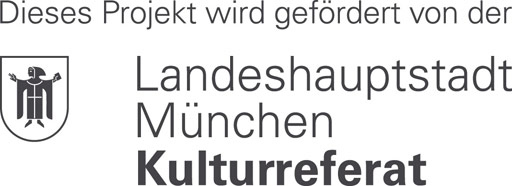
|
Pia Lanzinger is 2016 guest artist of the Artist-in-Residence program in the Ebenböckhaus of Landeshauptstadt München
Picture credits
top down: town archive München FS-STB-4767; Karl und Pia Lanzinger;
private archive Klaus Mai, München 2016;
town archive München FS-STB-4780;
Pia Lanzinger;
private archive Klaus Mai, München 2016;
Karl Lanzinger.
Copyright 2016 Pia Lanzinger – All rights reserved
Webdesign: Michael Hauffen